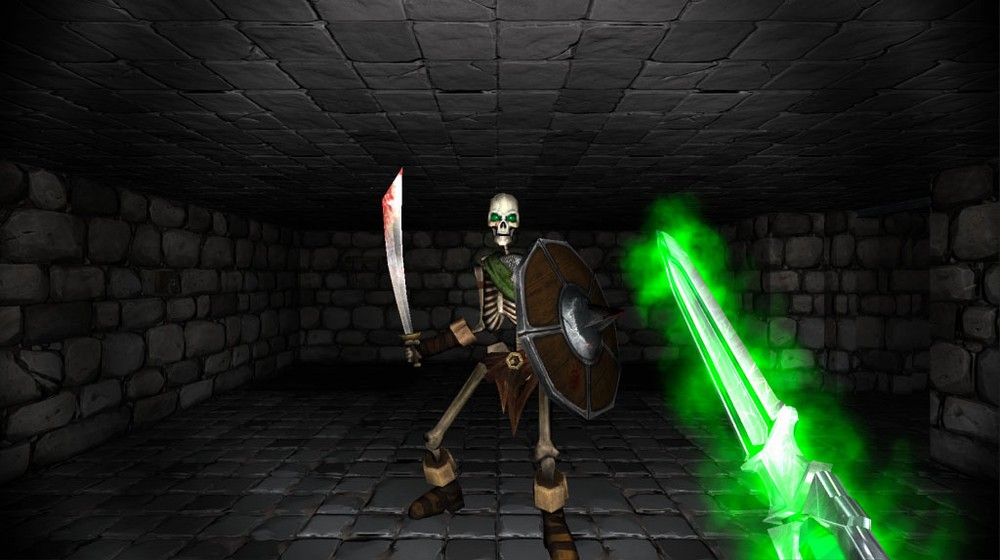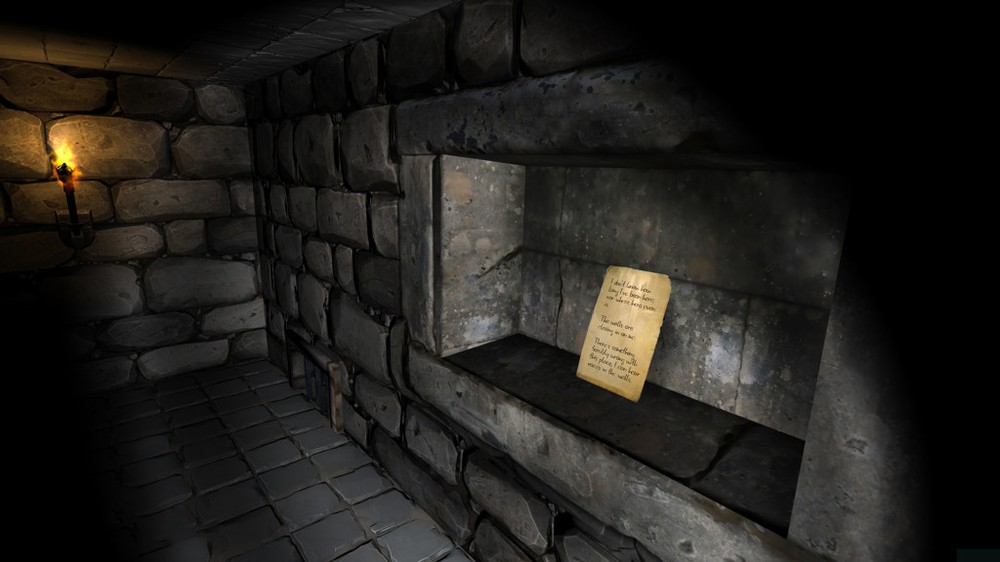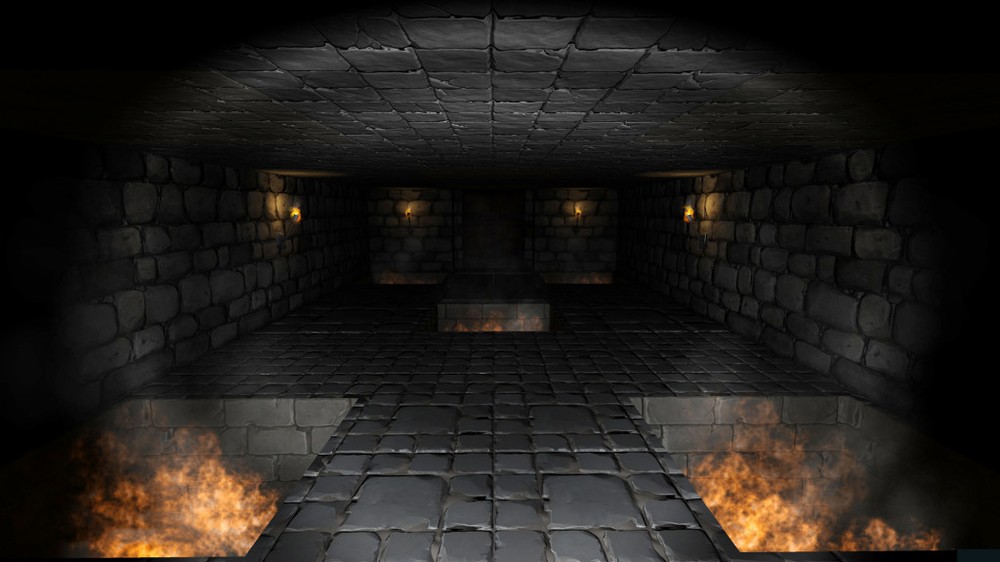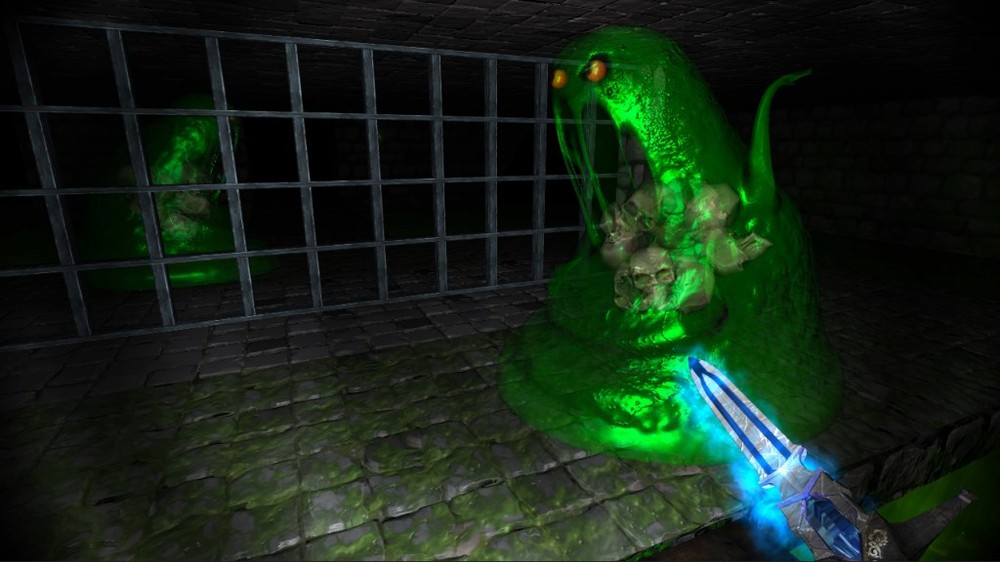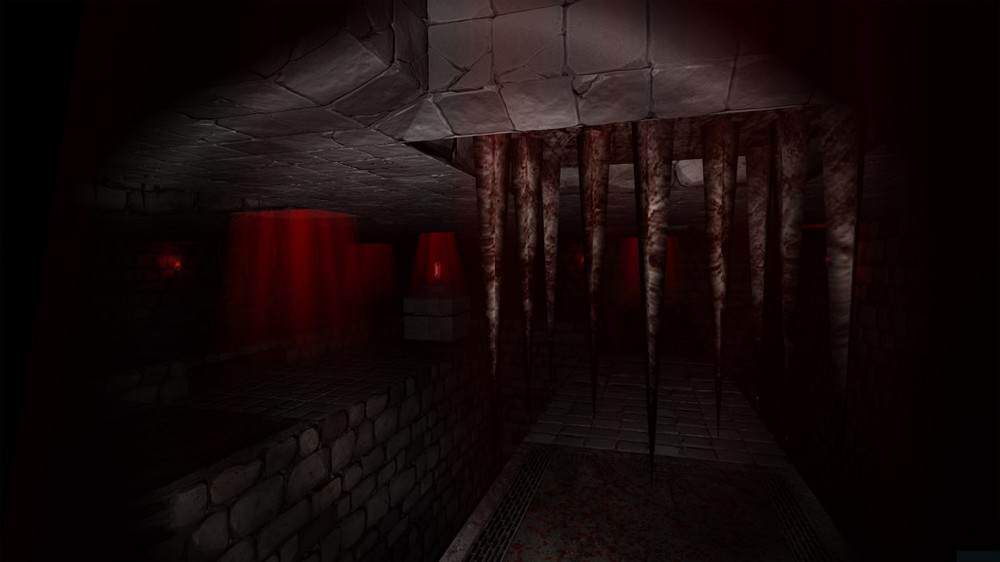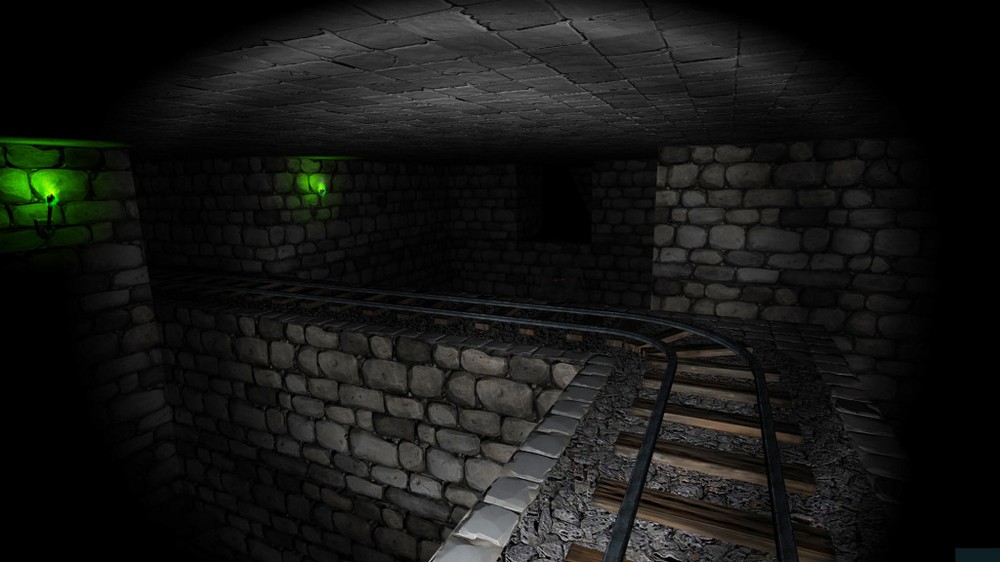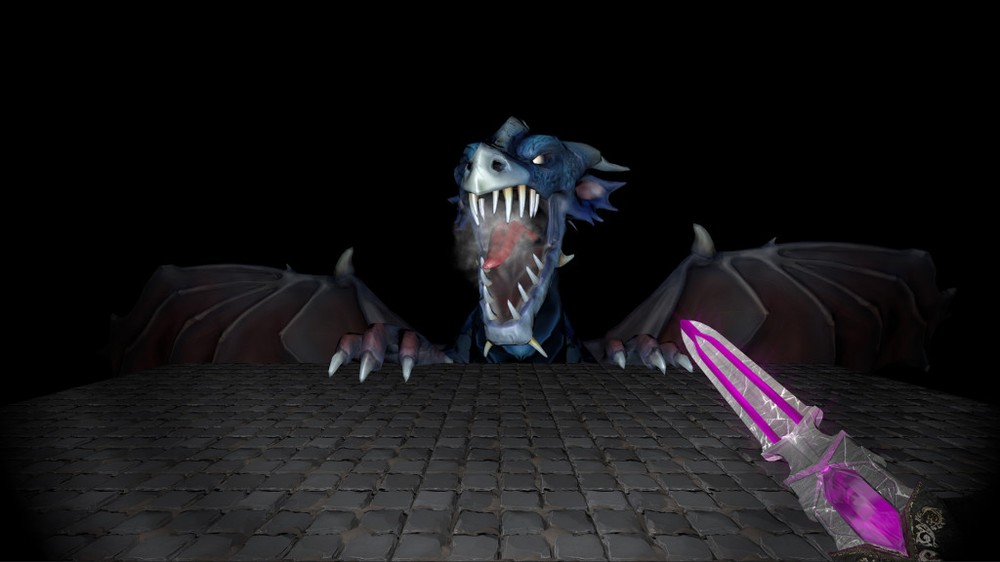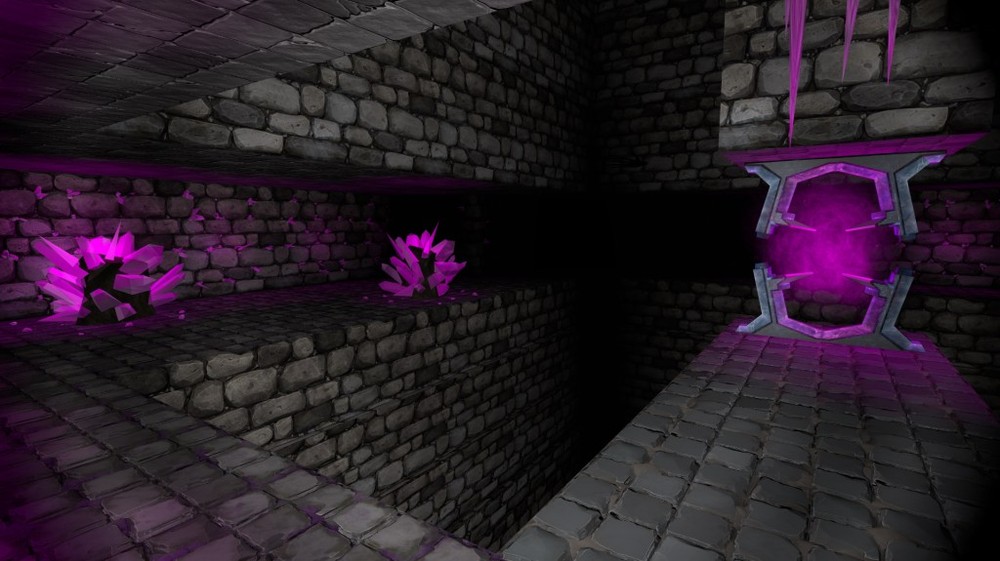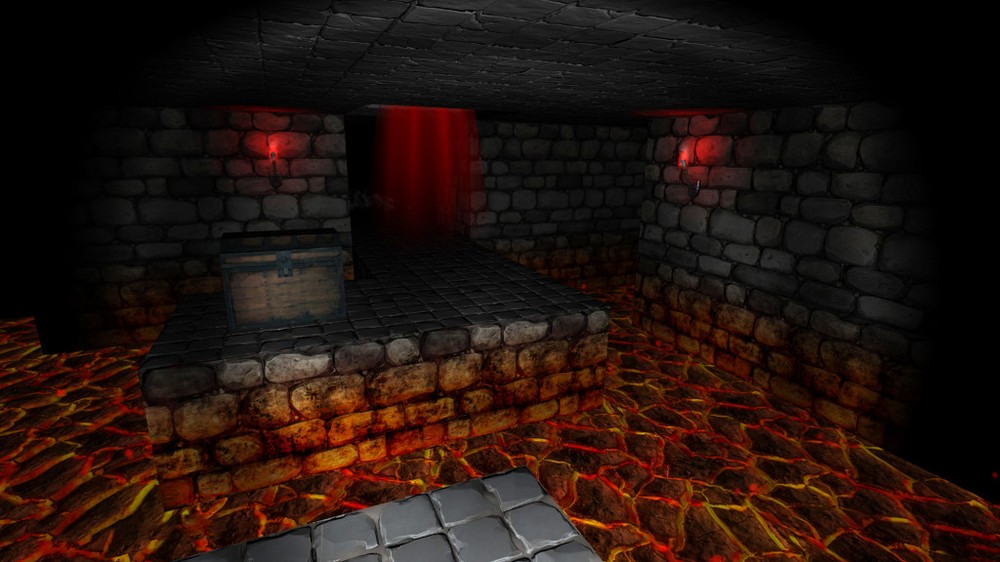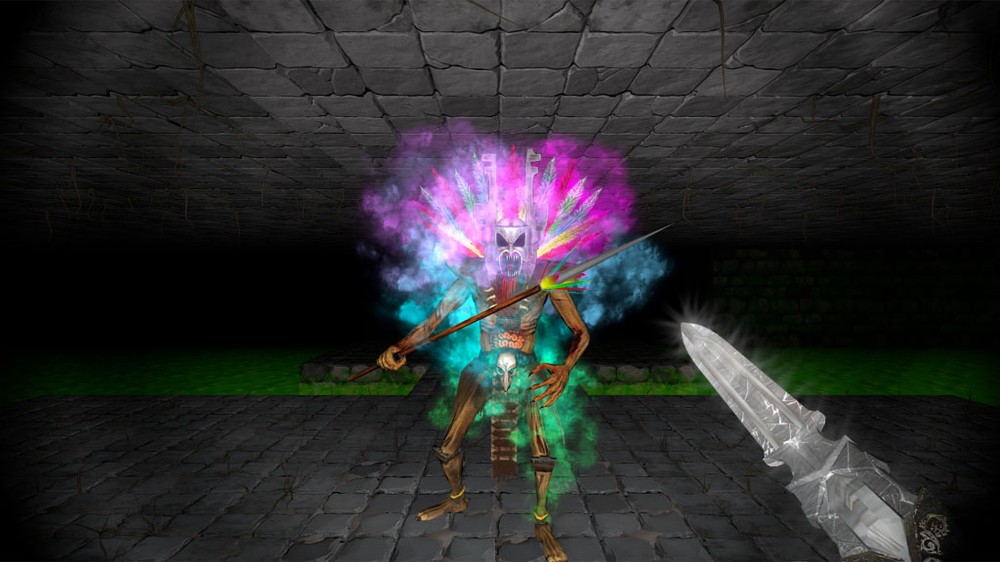If Crystal Rift were on anything other than the Oculus Rift it would be laughably dismissed as archaic; a game twenty years past its prime, but for some reason VR makes this simplistic dungeon romp work. Not that the developers were trying to create the next Elder Scrolls. Even the blurb in the Oculus store clearly states that they were going for that retro flavor of classics like Dungeon Master and Eye of the Beholder.
Crystal Rift features 30 levels of dungeon exploration, monster slashing, secret finding, treasure collecting, and note reading fun. While the Oculus Rift gives the player the freedom to look around in all directions, movement hearkens back to the glory days of grid-based exploration, giving the game a rather authentic D&D flavor; at least for those dungeon masters who created their own maps on graph paper – something you might find yourself doing in this game if you choose to explore the wonderful Game Dungeon Editor that allows you to create your own levels and adventures using assets from the game.
Crystal Rift itself is rather simplistic. You move around looking for skulls and the occasional colored gem that will open up locked doors granting access to deeper areas of the dungeon. Along the way you will meet a variety of classic D&D monsters; some like the skeletons that you can defeat with carefully timed slashes of your awesome sword and others like the gelatinous blob that you simply must avoid by observing their patrol patterns and timing your way through the section. You may go on a mine cart ride or flee from an Indiana Jones-style boulder. There are various traps like ceiling spikes and swing blades and other obstacles to circumvent, as new content is slowly trickled in the more you explore.
The game is a bit light on story and what little narrative exists is mainly told through the notes and pages scattered throughout the dungeon. These are useful and even humorous at times. Crystal Rift offers numerous save shrines from which you can resume your adventure after an untimely death, and there are also auto-checkpoints before most of the more troublesome spots. Being a grid-based game, the hit detection box is rather unforgiving when it comes to dodging a boulder or following a green blob creature too closely. You have multiple hearts on your health bar that can be restored by red vials and larger potions.
You can finish the main game in roughly 6-8 hours. It’s a shame that given the sandbox construction set design they couldn’t have come up with a procedurally generated game design that randomly created levels and placed treasure and monsters. I guess that’s what the level editor is for, so get to work. There are also settings to change difficulty and change the level of scariness. I have to admit to jumping a few times in this game. The VR is quite immersive despite the retro graphics and dated gameplay, and it’s easy to get transported into this virtual dungeon.
Crystal Rift has a mix of really good and really “classic” graphics. By today’s standards the textures and the awkward animations of skeletons and mummies are easily dismissed, but I found them totally charming, and they sparked memories of the countless hours I spent playing Ultima and other 90’s dungeon crawlers. Some graphics like the sword were beautiful and effects like fire were quite convincing. The transparent green blob creatures were awesome, and I was humming the Indiana Jones theme while riding the mine cart. The sound effects are convincing enough, and the music was really good.
Having completed the main game and even dabbled with the dungeon builder I have to say this game is easily worth the $10 price of admission, even if you never touch the editor. The mix of exploration, treasure hunting, simplistic combat, and old-fashioned jump scares was fantastic, and I enjoyed nearly every minute exploring the sinister dungeon depths of Crystal Rift.


